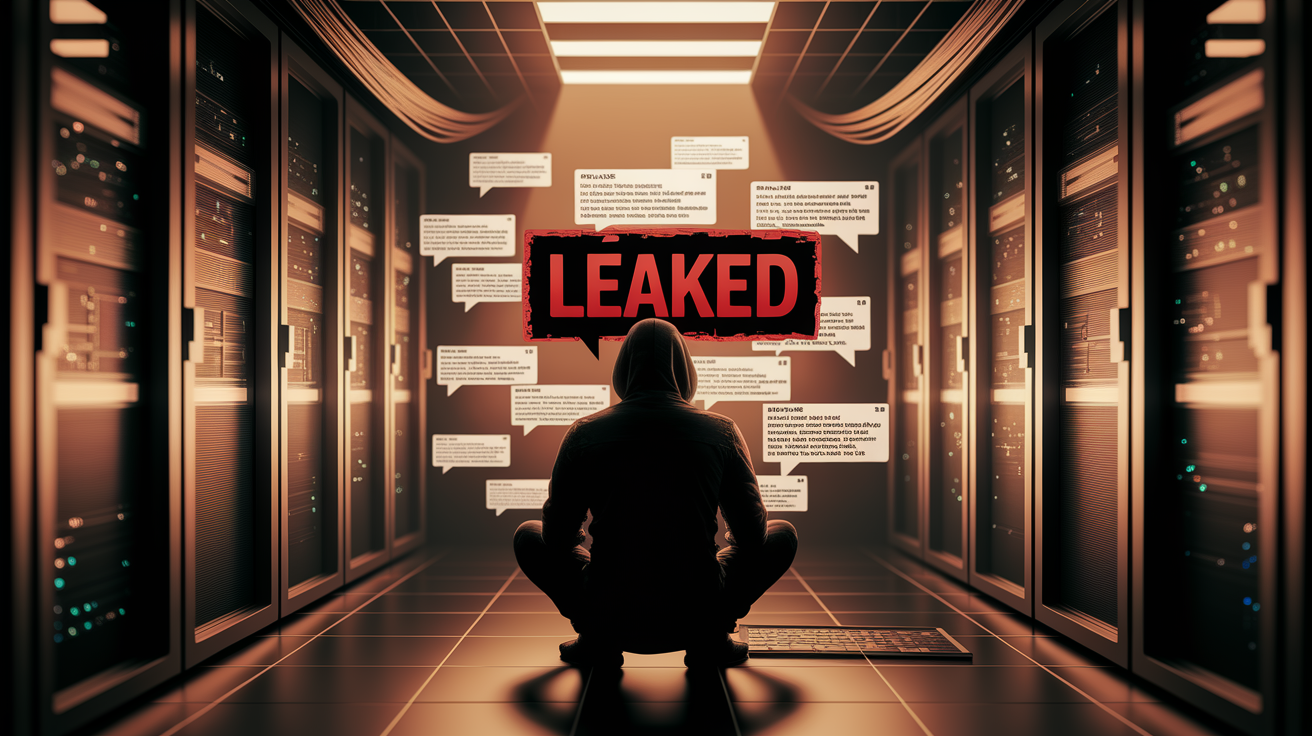Interview with Valéry – Managing Leaks in Ransomware Negotiations

Valéry, co‑founder and editor of LeMagIT and an experienced specialist in cybersecurity and end‑user computing, has long translated complex technologies into practical advice.
In this interview, he shares how organizations should manage crisis communication during cyberattacks, with a specific focus on the risks and impacts of leaked ransomware negotiations — from first responses to coordination with internal teams and authorities — so they can protect stakeholders and preserve trust.
General Understanding of Ransomware Negotiations
1.Can you explain what ransomware negotiations typically involve and why they are sensitive?
Valéry: "Ransomware negotiations generally involve information about the victim of the attack, starting with its name. That's very sensitive for a victim that hasn't publicly disclosed the attack.
Even if there's no intention to pay, the fact that a conversation is taking place can be misinterpreted. Leaks during the process can undermine the goals of the negotiation.
Additionally, exchanged files — whether they're raw lists of stolen data or encrypted files being tested for decryption — can contain PII or IP, making them highly sensitive."
2.What are the key risks associated with leaks of ransomware negotiations?
Valéry: "The first risk is obvious: an undisclosed cyberattack becomes public. If a ransom had been paid to suppress the news, that intent fails.
Worse, sensitive information shared during negotiation might be exposed, wrecking any planned communication strategy."
3.How can leaked ransomware negotiations impact an organization’s reputation and overall security posture?
Valéry: "In case of a cyberattack, resilience depends on two pillars: IT and communication.
As shown in a 2022 Bessé/G.P. Goldstein analysis, 'communication is essential to trust'. If communication appears inconsistent or unprofessional — especially in leaked chat logs — it damages trust.
Leaked conversations may also make the victim a target for additional threat actors looking to exploit perceived weakness. It has happened before."
Prevention Strategies
4.What steps can organizations take to ensure the confidentiality of ransomware negotiations?
Valéry: "First, minimize exposure to the ransom note — especially with employees and customers. But when it's printed or unavoidable, find a way to establish a secure channel to the threat actor.
Second, do not upload ransomware samples to public sandboxes or VirusTotal — at least not until incident response is complete.
And finally, if a payment is made, ask the threat actor to delete the chat, and verify that it's actually gone. Some groups like Akira are known to do this regularly."
5.Are there specific tools or technologies that can help prevent such leaks during the negotiation process?
Valéry: "Many ransomware groups operate via web‑based negotiation interfaces. If a chatroom seems compromised, they can open a new one. Details can be exchanged using ephemeral file sharing services or other discreet channels.
Some threat actors also accept switching to email, Tox, or Session."
6.How important is encryption when communicating with threat actors during ransomware negotiations?
Valéry: "Threat actors usually only care about encryption while the negotiation is ongoing. After that, their interest in confidentiality drops.For victims who intend to pay and keep the attack secret, encryption is critical. For others, maybe not.
But in any case, the rule is: 'assume leak'."
Organizational Best Practices
7.Should organizations establish predefined protocols for ransomware negotiations? If yes, what should these protocols include?
Valéry: "Absolutely. Just as you'd prepare an incident response plan, you should plan communication protocols for ransomware events.
Consider scenarios based on how the ransom note appears, and build processes to keep those conversations confidential.
But remember: the threat actor is not trustworthy. Some, like LockBit 3.0 and DragonForce, routinely publish failed negotiations. And you have no guarantee those chat logs weren’t tampered with."
Legal and Ethical Considerations
8.How should organizations handle third‑party involvement (e.g., cybersecurity firms, law enforcement) to minimize the risk of leaks?
Valéry: "That’s a near no-brainer. Incident response firms are usually highly trustworthy. They’re contractually and operationally focused on confidentiality.
They also typically restrict access to conversations — even internal technical teams don’t see them."
9.What are some common mistakes organizations make during ransomware negotiations that increase the risk of leaks?
Valéry: "One big mistake: refusing to engage at all. If no one logs in to the attacker’s chatroom, anyone with access to the ransomware sample or note might do it and extract info.
Even if you won’t pay, it’s smart to at least engage, ask for a new chatroom, and get the old one deleted.
This risk varies. Some ransomware builds the ransom note using runtime arguments, making it harder for third parties to re-enter negotiations from the sample."
Closing
10.If you had to give one key piece of advice to organizations facing ransomware negotiations, what would it be?
Valéry: "Don't do it yourself. Ask law enforcement, your insurer, or a professional incident response firm who should negotiate on your behalf.
Victims are rarely in the right headspace.
Ideally, you’ve already defined a strategy and goals before you’re in the middle of a crisis."
Final Thoughts
Many thanks to Valéry for his clear, actionable guidance.
Leaked ransomware negotiations can be devastating, both technically and reputationally.
Effective crisis communication is less about perfect answers and more about:
- Prompt, honest updates
- Precise stakeholder targeting
- Disciplined coordination among internal teams and external authorities
- And above all, maintaining the mindset: “assume leak”
By preparing these principles and protocols in advance, organizations can respond with clarity — and preserve trust when it matters most.
